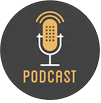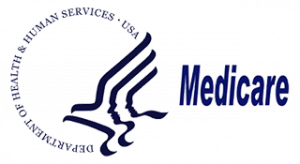Aphasia
Types of Aphasia
- Broca’s Aphasia
- You know what you want to say, but cannot find the words needed communicate.
- Wernicke’s Aphasia
- You hear someone talking or see the printed page, but cannot make sense of the words.
- Anomic or Amnesia Aphasia
- The least severe form of aphasia. Individuals have difficulty in using the right names for objects, people, places or events.
- Global Aphasia
- The most severe, caused by widespread damage to the language areas of the brain. Individuals with global aphasia cannot speak or understand speech, nor can they read or write.
Types of Treatment
- Group Therapy
- Art Therapy
- Music Therapy
- Visual speech perception therapy, which focuses on associating pictures with words
Multimodal Treatment
- Augmentative and Alternative Communication (AAC) – treatment involving the use of augmentative aids, such as picture and symbol communication boards and electronic devices, to help patients with aphasia express themselves.
- Visual Action Therapy – Treatment used with individuals with global aphasia. This nonvocal approach trains people with aphasia to use hand gestures to indicate specific items.
- Promoting Aphasics’ Communication Effectiveness (PACE) – treatment designed to improve conversational skills using any modality to communicate messages. Both the person with aphasia and the clinician take turns as the message sender or receiver, promoting active participation from the person with aphasia.
(AHSA.ORG)
Supporting a Loved One Suffering from Aphasia
- Get the person’s attention before you start speaking.
- Maintain eye contact and watch the person’s body language and use of gesture.
- Minimize or eliminate background noise (e.g. TV, radio, other people)
- Keep your voice at a normal level. Do not speak loudly unless the person asks you.
- Keep communication simple, but adult. Don’t “talk down” to the person with aphasia.
- Simplify your sentence structure and emphasize key words.
- Reduce your speech rate.
- Give the individuals time to speak. Resist the urge to finish sentences or offer words.
- Communicate using drawings, gestures, writing, and facial expressions in addition to speech.
- Encourage the person to use drawings, gestures and writing.
- Use “yes” and “no” questions rather than open ended questions.
- Praise all attempts to speak and downplay any errors. Avoid insisting that each word be produced correctly.
- Engage in normal activities and avoid being overprotective.
(American Speech, Language and Hearing Association)
Partner Approaches
- Conversation Coaching – treatment designed to improve communication between the person with aphasia and primary communication partners. The SLP serves as the “coach” for both partners.
- Supported Communication Intervention (SCI) – An approach to aphasia rehabilitation that emphasizes the need for multimodal communication, partner training and opportunities for social interaction. The three essential elements of SCI are incorporating augmentative and alternative communication, training communication partners, and promoting social communication participation in an aphasia group.
- Social and Life Participation Effectiveness – An approach that focuses on the real-life goals of the person with aphasia, considering what the person can do with and without support. Intervention may also focus on others affected by aphasia, such as family members.(ASHA.ORG)
Aphasia Support, Therapy Group at Autumn Oak
- Group therapy sessions twice a week to help those dealing with aphasia, to continuously build language skills
- Tuesday and Thursday 9-10am
- Free to current guests receiving speech therapy
- Please RSVP your seat (281) 816-3067
- Support from therapist to guide groups and offer suggestions for effective communication
Benefits of the Group Therapy
Practice for effective communication with loved ones and coworkers
- Building friendships with fellow patients that know the struggle of communication
- A fun and effective way to continue to remediate language difficulties










